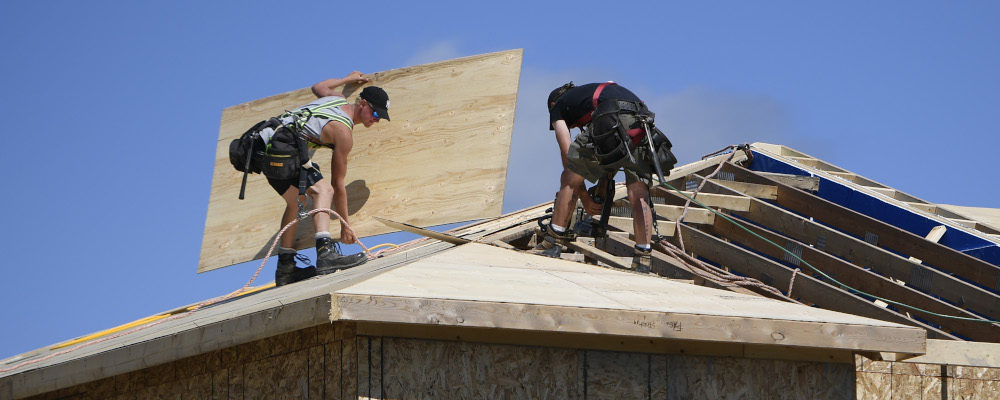As she announced a one percent vacant buyers’ tax as part of the spring budget, Finance Minister Chrystia Freeland remarked that “the idea here is that homes are for Canadians to live in. They are not assets for parking offshore money.”
It’s a familiar sentiment on the campaign trail. The Liberals, Conservatives and NDP all have some policy cracking down on foreign buyers and a recent poll commissioned by The Hub revealed it as one of the most popular proposals on the housing file.
But leaving aside the question of why the government should be telling owners of private property how they should be using it, Freeland’s comment reveals a belief that the supply of housing is largely fixed and we need to decide as a country how to allocate this scarce resource.
MORE SIGNAL. LESS NOISE. THE HUB NEWSLETTER.
It’s also evidence that the government has noticed how big the housing sector has become and how attractive it is from a revenue standpoint, regardless of the unintended side effects.
Canadians have looked at housing the wrong way for a long time. While we have seen a perpetual lack of supply in both the rental and home ownership markets, we have always resorted to restrictions on demand to alleviate it. We have seen new construction starts regularly lagging immigration levels and then wonder why prices seem to spiral out of control. We use rent controls that lower the return on rental housing and discourage investment. We use lending rules that restrict mortgages and now we are increasingly imposing vacant home taxes and restrictions on home purchases by foreigners.
According to Statistics Canada, we now spend almost as much in real estate transfer costs — much of it tax — as we do on new construction.
But is housing scarce? Why would it be? Canada is a vast country with one of the lowest population densities in the world. Yes, much of that is cold and remote, but even in our urban areas we have ample opportunities to build more density. It’s scarce because we want it to be. It’s scarce because our municipal political system does virtually nothing other than get in the way of development. It’s scarce because people resist any kind of change to their local neighborhoods. It’s scarce because we won’t displace 12 tenants to build a new building that would house 100.
We have placed some of Canadas most historically important export industries under pressure. For whatever right or wrong reason, we seem determined to export less petroleum by restricting pipelines, imposing carbon taxes and discouraging demand. Apparently, we also want less mining to stop what seems like environmental degradation. And apparently, we don’t want to export automobiles or other manufactured goods with our uncompetitive and inflexible labour structures. But Canada has to sell something to someone to finance one of the highest standards of living in the world. We can’t just keep borrowing to fund our economy without any way to replace the exports that created the economy that we now enjoy.
Housing is Canada’s biggest asset, with more than 7.5 million single family homes valued at over $5 trillion, far exceeding the $2.5 trillion value of our publicly-traded companies. At that size it’s also one of our biggest sources of long-term job growth and our biggest export opportunity. And if we could start to think about it the right way it could meaningfully help us rebuild our fiscal balance.
Export opportunity? Well, what is an export? It’s selling something to a foreigner that produces income for the country exporting it. If we export a ton of iron to a foreigner it’s gone, along with any further income opportunity. But if we sell a house to a foreigner, we get to retain the long-term tax revenue, maintenance opportunity and the spending that will come as the new owner uses it. It’s the best kind of export, because the product we sell never goes away. Discouraging this kind of export is sheer lunacy, regardless of how much or even whether it’s used by the new owner. Canadians are free to buy a car and not use it, but not so with a house.
As incomes and living standards have increased, Canada has become increasingly uncompetitive in traditional exports and has become, increasingly, a bedroom community to the world. A place that has lots of housing and an economy focused on the building and maintenance of houses and the support of the residents that live in them, but a declining amount of traditional commodity and manufacturing exports. The jobs are in construction and maintenance of houses and light commercial buildings, along with the retail, restaurant and entertainment businesses that support them.
Low productivity in Canada has led to low foreign investment for more than the past decade. The largest target for foreign investment, the oil sands, has been hampered by policies imposed to limit its growth and ultimately shut it down. Investments in mining and forestry are limited, for some sensible reason, by environmental concerns. Real estate is one sector that should be open for business, but increasingly it seems that policy makers would like to shut it down too.
Many countries have started to capitalize on their real estate by offering tax incentives that will attract high-income immigrants or part-time residents to shore up their housing values and provide economic opportunities in home maintenance, retail and entertainment. In Canada we seem to want to keep the world away.
Canada needs to see the opportunity of its own real estate, encouraging foreign investment and the economic activity that comes with home construction, maintenance and the local business that support housing. We need to shift our focus from restricting demand to increasing supply. We need to see real estate as a long-term economic opportunity, not an artificially scarce resource.
All ways of increasing supply are not necessarily helpful. The worst way is the one proposed by all of the major parties; direct involvement by the federal government in home development. It’s hard to imagine a more expensive, slow or inefficient way to build housing. There is no shortage of high-quality real estate development capacity of Canada. The last thing we need is government-built housing and all of the additional federal debt that would come with it.
Focusing on affordable housing is another bad strategy. Any new house, regardless of price, increases aggregate supply and will put downward pressure on the price of existing homes. Demanding affordability just increases the cost of production and discourages private investment. We make housing more affordable by making more housing, and since the highest returns come from making more expensive housing, that is the kind that is easier for the private sector to produce.
Greenfield home construction is also not the answer, or at least not most of the answer. While we have vast amounts of land in Canada, the continued sprawl of single-family home developments puts huge pressure on infrastructure, eliminates green space, and adds to highway congestion. There is a massive opportunity to increase density on existing urban spaces and around existing transportation corridors.
Immigration patterns are also a challenge. Immigrants typically choose to stay in major centres where their diasporas can provide support and a familiar culture. Vancouver, Toronto and Montreal face the largest pressure on immigrant settlement. But over time, with increasing patterns of remote work and increasing integration of immigrants, smaller centres can become more compelling destinations if they can develop higher density cores linked with decent transportation hubs.
Restricting immigration is also not the answer. Canada needs the skills of new immigrants that fuel some of our highest growth sectors. And to help dig us out of the fiscal hole dug by the pandemic, we need the assets, the entrepreneurialism and the skills that the right kind of immigrants can bring. But we can’t bring more immigrants if they can’t find places to live.
How do you increase supply? By removing many of the restrictions that stand in the way. By allowing the re-development of major streets, by curtailing the NIMBYism that adds years to the redevelopment of existing low-density areas. By taking away some of the development levies that make new construction more expensive. By working to encourage development of construction skills that can alleviate labour shortages. By finally scaling back COVID income supports so that people will be encouraged to go back to work. And by eliminating the rhetoric that sees development and investment in real estate as a threat rather than an opportunity.




